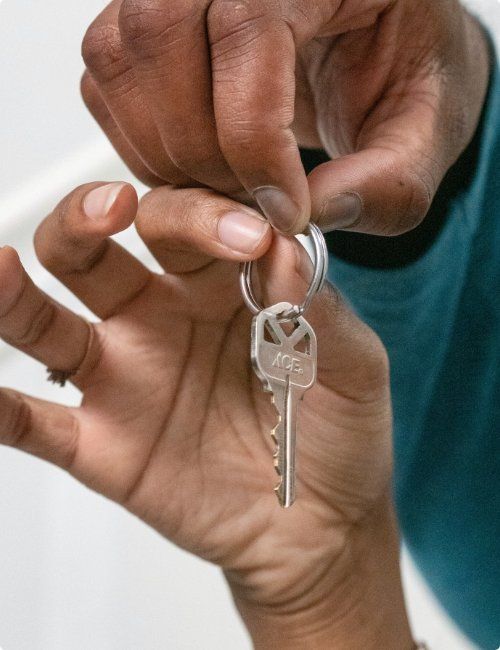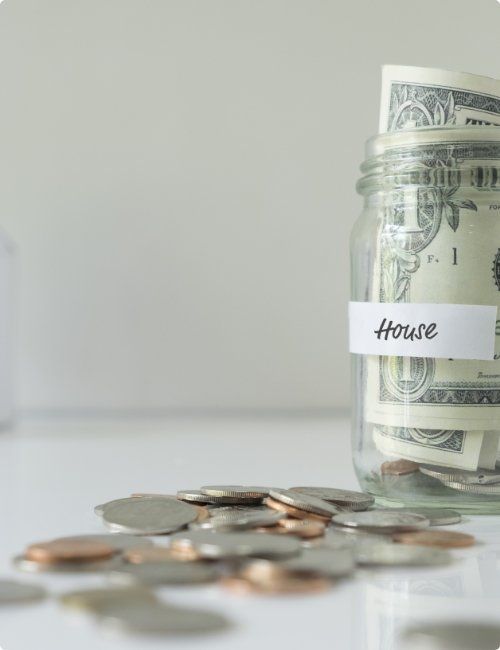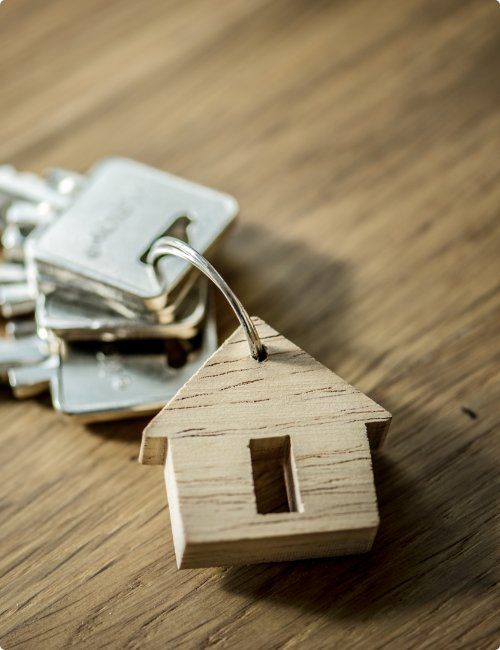Fixed vs. Adjustable Rate Mortgages
How to Make the Right Decision for your Home Mortgage Structure

When you’re buying a home, one of the first things you’ll need to focus on is your mortgage interest rate calculation.
A difference in interest of even 0.5% could make or break your bank account for the life of your loan.
So, before you apply for the home of your dreams, you’ll probably be doing a lot of shopping around for the right mortgage and interest rate. And one of the first questions you may be asking yourself is:
Should I take out a mortgage with a fixed or adjustable interest rate, and what’s the difference?
Well, fixed interest is pretty straightforward, but adjustable-rate mortgages are where things get a little more complicated. So, keep reading—we’ll explain the differences between fixed and adjustable-rate mortgages so you can make the best decision for your home mortgage.
Your Interest Rate Calculation
As a homebuyer, you have a lot of options when it comes to your mortgage interest rate.
It’ll take some digging to find the best choice for your needs, but understanding how your interest rate is calculated is a great place to start.
Think of the factors in your interest rate calculation as the wheels on your car—without them, you’re not going anywhere. The same goes for your home buying journey.
In short, you’ll want to focus on:
Your Credit Score: This number can mean the difference between a 3% or 4% interest rate on your mortgage. Over a 15 or 30-year loan term, an increase of 1% means you’ll pay thousands (or hundreds of thousands) more to the bank.
Your Loan Term: If you can afford the higher monthly payments that come with a 15-year loan term, you’ll probably receive a lower interest rate. For a 30-year loan term, it’s just the opposite—you’ll owe less in monthly payments, but your interest rate calculation will probably be higher.
Your Down Payment: The standard for most lenders is 20% of your loan principal—the amount of your loan without interest. If you’re unable to pay 20% upfront, you’ll probably end up paying private mortgage insurance (PMI), which will increase your rate.
Your Loan-to-Value Ratio: Let’s say you take out a $200,000 mortgage with a 20% down payment ($40,000). Your loan principal would be $160,000, making your Loan-to-Value (LTV) ratio 80%.
That’s fine for the lender, but if your ratio is any higher, you’ll probably receive a higher interest rate—especially if you have a low credit score.
Keep in mind that your may be determined by the overall performance of the housing market and economy too—especially if you have an adjustable-rate mortgage (more on this later).
Fixed Interest
Adjustable-rate mortgages (ARM) are appealing to some homebuyers because the interest rate is lower than a comparable unvarying-interest loan… at first.
Over time, an adjustable-rate will begin to increase, and then the rate can fluctuate depending on a few factors.
Still, adjustable rates are attractive to many home buyers—the initial payments are generally much lower than a fixed-rate mortgage, allowing for a much larger loan allowance.
ARM Terms to Know
Adjustment Frequency: The given amount of months or years between your interest rate adjustment. Your interest rate could change every month, 3 months, quarter, year, or even a few years depending on the agreement you make with your lender.
Caps: The limit on how much your interest rate can increase at each adjustment period.
Ceiling: The limit that your interest rate can reach during the entire loan term.
Index: Your interest rate adjustment is based on a benchmark. This benchmark might be based on the interest rate of a treasury bill, or it could be based on an index such as the London Interbank Offered Rate (LIBOR), or the Secured Overnight Financing Rate (SOFR).
Margin: When you agree to an ARM, you’ll agree to pay a set margin. Typically, this amount is a couple of percentage points higher than whatever the index is at a given time.
Think of the index and margin as the bread and butter of your adjustable-rate mortgage.
Your interest rate is determined by the index + the margin.
So, your interest rate will be dirt cheap for the first few months, and then it will change depending on the performance of the indexes.
Your lender will use multiple indexes to determine your interest rate. The most common are one-year treasury securities, the Cost of Funds Index, and the prime rate.
Basically, market performance determines your interest rate. And as you probably know already, the economy can and will fluctuate, taking your interest rate with it.
You could be saving thousands for the first few years, but if the indexes see a downturn, your rates could skyrocket.
There are caps and ceilings on how much your interest can increase, however. Generally, your adjustment ceiling will be no more than 5%, and your cap might be 2% for every adjustment period.
Let’s say you start with a 2% interest, adjustable-rate mortgage that will begin to change after 6 years. Those 6 years might be smooth sailing…
But by the time you arrive at year 8 of your mortgage, that interest rate might jump to 6%.
So, it’s nearly impossible to predict how your interest rate might adjust, and you’ll need to keep a careful eye on market indexes to avoid losing thousands.
Still, the benefit of adjustable-rate mortgages is that they can save you a lot of money, especially if you’re not sticking around long. Typically, lenders will notify you in advance of any adjustments and are usually required to help you find other options if you can’t afford your adjusted interest rate.
Pioneering a Solution
United Financial Freedom began with an idea:
To help you and other homeowners like you get out of debt as soon as possible.
We’re not talking 30, 20, or even 15 years paying off debts.
Our solution can help you pay off your debts in as little as 7-10 years!
It’s called the Money Max Account, and the results speak for themselves:
We’ve helped hardworking homeowners just like you pay off $2 BILLION (and counting) in mortgage payments and other debts.
Deciding on a fixed or adjustable-rate mortgage is like being caught between a rock and a hard place.
Of course, you’ll still have to choose between the lesser of two interest rate evils…
But with Money Max, you can save more money and be debt-free in less time.
How does it work?
By keeping track of your debts, payments, and expenses in a central location, the Money Max Account uses advanced banking strategies to find you the fastest way out of debt.
Money Max gives you the best monthly payment calculation for your needs, and you decide the rest.
Unlike the bank, the Money Max Account lets you decide where your money goes because it was designed with you—the consumer—in mind.
The bottom line?
You can be out of debt, out of the clutches of your lender, and into the lifestyle you’ve always wanted with the Money Max Account.
Debt-free in 7-10 years means more money in your pocket for your family and your lifestyle.
So, whether you’ve been paying off your mortgage for decades or you’re just starting, give the Money Max Account a try.
For more information, visit our homepage or give us a call. Our representatives are standing by to help you start your journey to a debt-free future.
Phone: (877) 794-5700
Fax: (716) 799-1155
Browse Our Website
Email:
COntact Information
Address:
3960 Harlem Rd Ste 12B
Amherst, New York 14226
Business Hours
Monday: 10-5
Tuesday: 10-5
Wednesday: 10-5
Thursday: 10-5
Friday: 10-5
Saturday: Closed
Sunday: Closed







